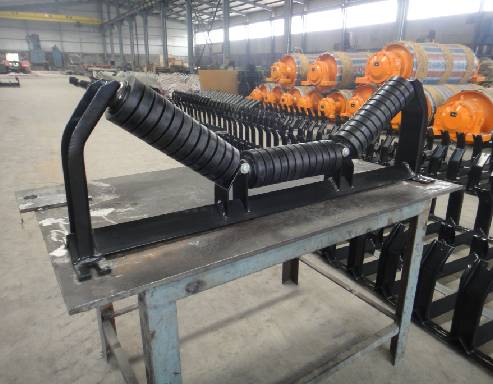 Afrikaans
Afrikaans  Albanian
Albanian  Amharic
Amharic  Arabic
Arabic  Armenian
Armenian  Azerbaijani
Azerbaijani  Basque
Basque  Belarusian
Belarusian  Bengali
Bengali  Bosnian
Bosnian  Bulgarian
Bulgarian  Catalan
Catalan  Cebuano
Cebuano  Corsican
Corsican  Croatian
Croatian  Czech
Czech  Danish
Danish  Dutch
Dutch  English
English  Esperanto
Esperanto  Estonian
Estonian  Finnish
Finnish  French
French  Frisian
Frisian  Galician
Galician  Georgian
Georgian  German
German  Greek
Greek  Gujarati
Gujarati  Haitian Creole
Haitian Creole  hausa
hausa  hawaiian
hawaiian  Hebrew
Hebrew  Hindi
Hindi  Miao
Miao  Hungarian
Hungarian  Icelandic
Icelandic  igbo
igbo  Indonesian
Indonesian  irish
irish  Italian
Italian  Japanese
Japanese  Javanese
Javanese  Kannada
Kannada  kazakh
kazakh  Khmer
Khmer  Rwandese
Rwandese  Korean
Korean  Kurdish
Kurdish  Kyrgyz
Kyrgyz  Lao
Lao  Latin
Latin  Latvian
Latvian  Lithuanian
Lithuanian  Luxembourgish
Luxembourgish  Macedonian
Macedonian  Malgashi
Malgashi  Malay
Malay  Malayalam
Malayalam  Maltese
Maltese  Maori
Maori  Marathi
Marathi  Mongolian
Mongolian  Myanmar
Myanmar  Nepali
Nepali  Norwegian
Norwegian  Norwegian
Norwegian  Occitan
Occitan  Pashto
Pashto  Persian
Persian  Polish
Polish  Portuguese
Portuguese  Punjabi
Punjabi  Romanian
Romanian  Russian
Russian  Samoan
Samoan  Scottish Gaelic
Scottish Gaelic  Serbian
Serbian  Sesotho
Sesotho  Shona
Shona  Sindhi
Sindhi  Sinhala
Sinhala  Slovak
Slovak  Slovenian
Slovenian  Somali
Somali  Spanish
Spanish  Sundanese
Sundanese  Swahili
Swahili  Swedish
Swedish  Tagalog
Tagalog  Tajik
Tajik  Tamil
Tamil  Tatar
Tatar  Telugu
Telugu  Thai
Thai  Turkish
Turkish  Turkmen
Turkmen  Ukrainian
Ukrainian  Urdu
Urdu  Uighur
Uighur  Uzbek
Uzbek  Vietnamese
Vietnamese  Welsh
Welsh  Bantu
Bantu  Yiddish
Yiddish  Yoruba
Yoruba  Zulu
Zulu Essential Components of Roller Conveyor Systems for Efficient Material Handling
Understanding Roller Conveyor Components
Roller conveyors are integral to modern material handling systems, playing a vital role in various industries, from manufacturing to distribution centers. These systems facilitate the efficient movement of goods, reducing labor costs and increasing productivity. To comprehend how roller conveyors function, it's essential to understand their core components and the materials used in their construction.
Key Components of Roller Conveyors
1. Rollers The core component of any roller conveyor, rollers are typically cylindrical and designed to support the load. They can be made from various materials, including steel, plastic, and aluminum, depending on the application environment and the weight of the items being transported. Steel rollers are strong and durable, making them suitable for heavy loads, while plastic rollers are often used for lighter items and are resistant to corrosion.
2. Frames The frame provides structural support for the conveyor system. Conveyor frames are usually made from steel or aluminum, offering strength and stability. An effective frame design allows for easy installation and ensures that the rollers are properly aligned for smooth operation.
3. Drive Mechanism To initiate movement, a roller conveyor typically features a drive mechanism, which can be an electric motor connected to a belt or chain that drives the rollers. Systems can be powered by either direct drive or indirect drive methods, with direct drive systems being more efficient for continuous operation.
4. Supports Adequate support structures are necessary to uphold the weight of the conveyor and the goods it carries. Support legs and brackets are designed to provide stability and can often be adjusted to fit the specific operational needs of a facility.
roller conveyor components

5. Bearings The rollers are equipped with bearings, allowing them to rotate smoothly and reducing friction. High-quality bearings are essential for minimizing wear and tear on the rollers, thereby extending the life of the conveyor system.
6. Controls Modern roller conveyor systems can be equipped with automated controls that enhance functionality. These controls can regulate the speed and direction of the conveyor and may integrate with broader warehouse management systems to optimize workflow.
Advantages of Roller Conveyors
One of the primary benefits of roller conveyors is their ability to handle heavy loads with ease. They can transport a variety of items, including boxes, pallets, and heavy machinery, without requiring excessive manpower. Roller systems can be designed for different slopes, which can facilitate gravity-driven movement, allowing goods to flow from one area to another with minimal energy expenditure.
Moreover, roller conveyors are highly configurable. They can be easily adjusted to fit different layouts and can be expanded with additional sections to accommodate growing operations. This flexibility makes them suitable for various industrial applications.
Conclusion
In summary, roller conveyor components are foundational to the efficiency and functionality of material handling systems. Understanding the roles of rollers, frames, drive mechanisms, supports, bearings, and controls is critical for businesses aiming to implement or optimize their conveyor systems. By investing in high-quality components and ensuring proper maintenance, organizations can enhance their operational efficiency, reduce costs, and improve overall productivity. As industries continue to evolve, roller conveyors will remain a critical component of supply chain logistics, adapting to meet the changing demands of the market.
-
Trusted Conveyor Solutions from Leading Conveyor Idler Roller ManufacturersNewsJun.27,2025
-
Reliable Return Idler Solutions for Efficient Belt Conveyor SystemsNewsJun.27,2025
-
Precision Conveyor Accessories for Streamlined Material HandlingNewsJun.27,2025
-
High-Quality Belt Conveyor Idler Solutions for Efficient Material HandlingNewsJun.27,2025
-
High-Performance Belt Conveyor Pulleys for Reliable Material HandlingNewsJun.27,2025
-
Enhancing Material Handling EfficiencyNewsJun.27,2025





























